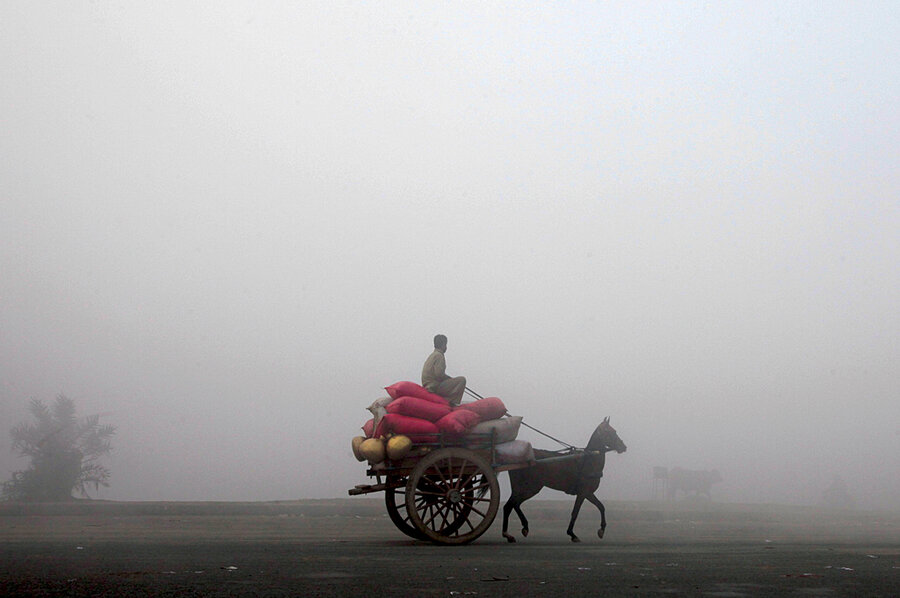Green energy isn't always good energy
Solar, wind, hydro, and geothermal are widely considered benign energy sources. For the most part, they are. They harness nature without producing noxious emissions or significant waste streams. They don’t require strip mining, punching a hole in the seabed, fracturing bedrock, or splitting atoms. From sailboats to south-facing gardens, hot springs to millstreams, green energy’s friendly reputation predates hydrocarbon and fission by centuries.
But in their modern application, even these ancient energy sources have downsides. Most photovoltaic cells, for instance, contain nitrogen trifluoride, which the Scripps Institution of Oceanography says is a potent greenhouse gas when it escapes into the air. Solar cells also block sunlight from grass and flowers that otherwise would bask in it. When you dam a river, you constrict fish migrations and deprive alluvial plains of nutrients. Geothermal often means power plants atop scenic areas. And wind, the subject of this week’s cover story, needs enormous wind turbines. Birds and bats fly into them. Noise and visual pollution can be annoying.
Wait. I know what you are thinking: Green energy drawbacks are tiny compared with Chernobyl, Fukushima, the Exxon Valdez, the BP oil spill, and global warming. Absolutely right. But part of the reason the drawbacks are minor is that green energy is still a fraction of overall energy production. A few windmills on the Zuider Zee are as charming as tulips and wooden shoes. But when you erect acres of wind turbines, you’ve got a scale problem.
Consider the world before the internal combustion engine. Today, most people consider the automobile a Faustian bargain, a huge convenience that is nevertheless blamed for altering our landscape and atmosphere. In its first years, however, the horseless carriage was not just a technological marvel but an answer to a significant crisis. As the urban population of people exploded in the 19th century, so did the urban horse population. The effect on the environment, public safety, and public health was awful and heading for catastrophic, writes Eric Morris in an excellent 2007 article (you can read it here) in the University of California’s Transportation Center’s Access magazine: “One New York prognosticator of the 1890s concluded that by 1930 the horse droppings would rise to Manhattan’s third-story windows. A public health and sanitation crisis of almost unimaginable dimensions loomed.” And horses, which could rear up or bolt for no apparent reason, were even more dangerous per thousand people than automobiles. They were also exploited mercilessly in the grim economics of 19th-century cities.
Black Beauty is a magnificent creature with an insignificant waste stream. Ten thousand are an environmental nightmare. Henry Ford helped solve that problem. But now we burn through so many hydrocarbons that we have a new environmental crisis.
Green energy is good energy. But it is not perfect. Think about wind turbines. Over the Christmas holidays, a 26-story-tall one popped up by the highway I take to work. It’s big – “War of the Worlds” big. That single turbine is a novelty. An army of them can become a huge controversy, as has happened off the picturesque south coast of Cape Cod, where a massive wind farm on Nantucket Sound is inching forward amid intense local opposition.
Now wind energy is exploding across the globe. In areas such as Mexico’s Isthmus of Tehuantapec, questions of exploitative development have accompanied the boom. That is likely to be the case in many parts of the developing world, which has all too frequently been despoiled to feed the energy and raw-materials needs of industrial nations. NIMBY issues and indigenous resistance are bound to multiply as fast as windmills, solar farms, and other green energy installations as the world races to diversify away from hydrocarbons to protect the climate and at the same time accommodate both the 7 billion people now on the planet and the 3 billion more that are likely to arrive by 2070.
We solved the horse problem with horsepower. Now we have a horsepower problem. Solving it presents a new set of problems. There’s always a job out there for a new problem solver.
John Yemma is the editor of The Christian Science Monitor.





